For the past 60 years, The Pennsylvania Sports Hall of Fame has honored and inducted over 780 incredible men and women who have made a lasting impact in Pennsylvania through extraordinary athletic achievement and contributions. Whether these activities have been achieved on or off the field, we honor them. Through our future virtual museum, we educate and celebrate their achievements for years to come.
The Pennsylvania Sports Hall of Fame’s 2025 Induction Ceremony and Dinner is Saturday, October 18, 2025 at 6:00 pm at the Sheraton Station Square Hotel.
Fred Cox
Deceased
Year Inducted:2008
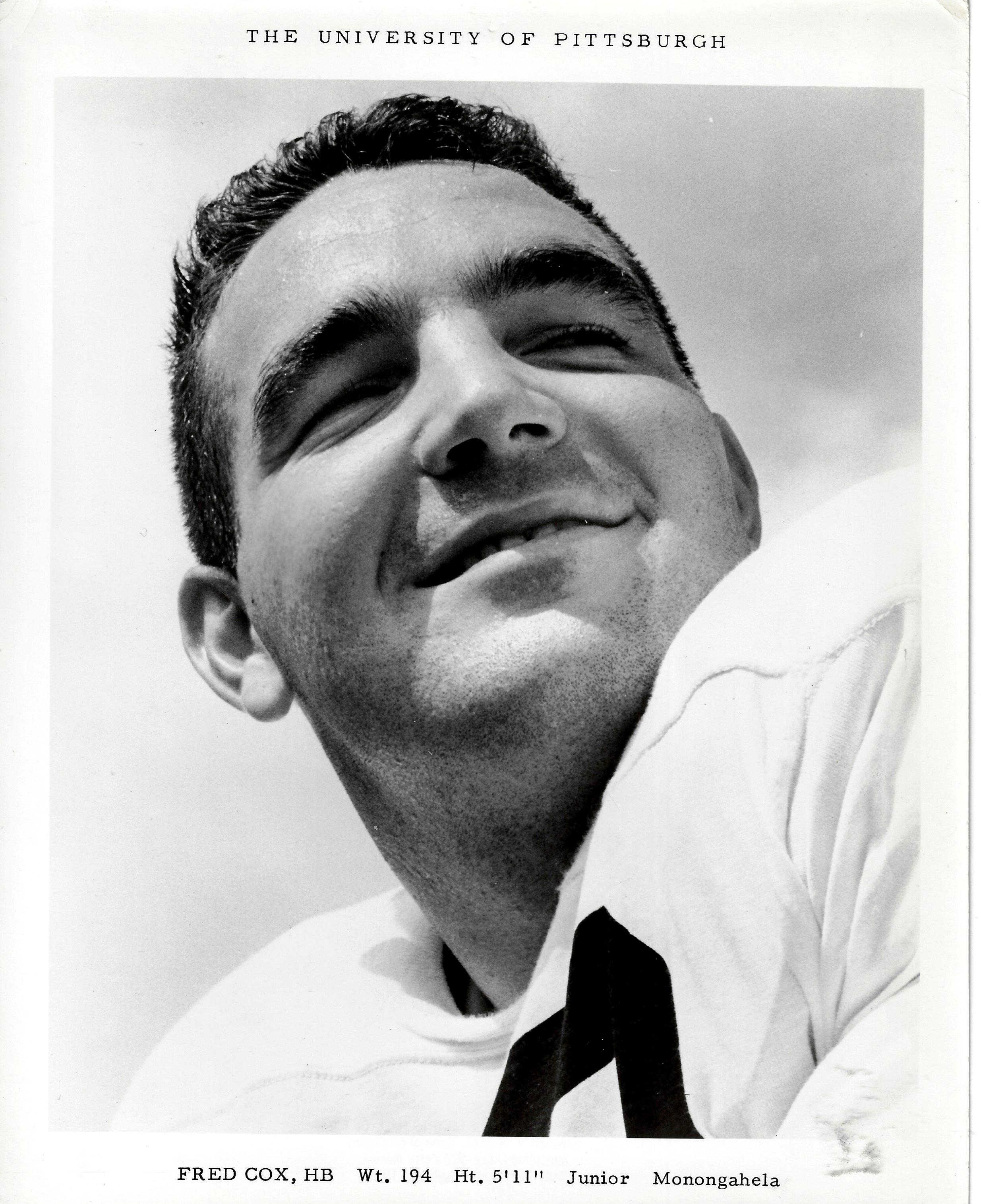
-
Elected 1976 Mon Valley Sports Hall of Fame
2006 Ringgold Rams Hall of Fame
2008 Pennsylvania Sports Hall of Fame
Fred Cox, a 1957 graduate of Monongahela High School, was an all-around athlete lettering in four sports - football, basketball, baseball, and soccer. He made the All-Conference team as a running back, was the leading scorer of the soccer team, which only lost one game in three years, and batted over 300 every year in baseball. After graduating from high school, Fred starred at the University of Pittsburgh as a running back and kicker.
Fred was drafted as an eighth-round future choice in 1961 by the Cleveland Browns but had back trouble when he reported to camp in 1962 and was never given consideration as a running back. The Browns quickly traded Cox to the Minnesota Vikings, who cut Cox in 1962. He returned in 1963. Between that time Fred went back home to Monongahela and taught school. From 1963 until his retirement in 1977, Cox became an outstanding fixture for the Vikings.
He began studying at Northwestern Chiropractic Clinic in Minneapolis in 1967. Fred obtained his license to practice in 1972. He opened his own chiropractic clinic in Buffalo, Minnesota, after the 1974 football season.
Walter "Buddy" Harris
Deceased
Year Inducted:2008

-
One of the best athletes to emerge from the Philadelphia area, Walt was a highly recruited high school All-American in basketball averaging 30 points per game as a Philadelphia All-Public performer. He was a first-round pick of the Houston Astros in 1968 and a 27-1 American Legion record, voted MVP by the Philadelphia Inquirer and MVP in the East-West All-Star game. He reached the majors after a 28-15 minor league record and 1.95 ERA, but an injury shortened his career.
Walter Hynoski
Living
Year Inducted:2008

-
Walt was a football, track, and baseball star at Mt. Carmel High School. He went on to the University of Pennsylvania where he earned three letters each in baseball and football. He was a 60-minute player, averaging 53 minutes per game in 1954 when he was also the nation’s 6th ranked punter. That year he was also an HM All-American, All-Ivy, All-East, and All-State. A USAF jet pilot, Walt played on the Johnson AFB two-time Far East Inter-Service Championship Team and was named to the All-USAF Team.
James F. Mutscheller
Deceased
Year Inducted:2008
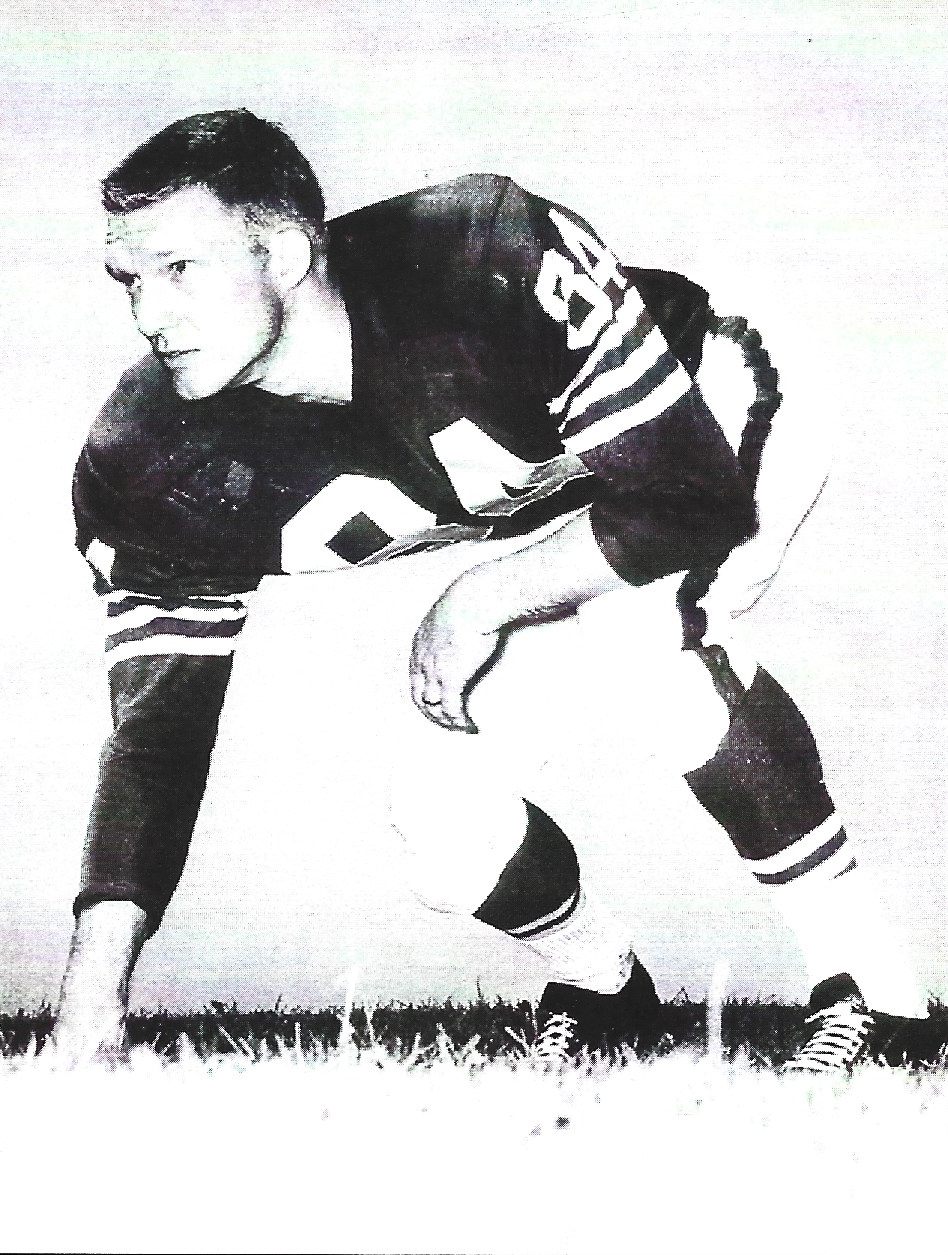
-
Jim was an all-around athlete at Beaver Falls High School earning 8 letters in football, basketball, and baseball. He garnered All-WPIAL and second-team All-State football honors as a senior. He went to Notre Dame and played defensive end as a sophomore and was a starting receiver and team captain in his junior and senior seasons. After two years in the Marine Corp, Jim played for the Baltimore Colts from 1954-1961 catching 220 passes for 3,885 yards and 40 touchdowns and earned Pro-Bowl honors in 1957.
Dick Purnell
Deceased
Year Inducted:2008

-
Dick was a four-sports star and Valedictorian of his class at Ashland High School. He went on to be a four-year starter and team captain at quarterback for Susquehanna University garnering All-State honors in 1956 and 1957 and Little All-American recognition in 1957. After a one-year stint with the Montreal Alouettes he began a 38-year teaching and coaching career, including 25 years as the head football coach and a 167-94-5 record. He was a PSFCA Hall of Fame inductee in 2004.
Elaine J Sobansky-Blackhurst
Living
Year Inducted:2008

-
About This Inductee:
Basketball, Track & Field
Trinity High School & Penn State University
T.H.S. Accomplishments:
BASKETBALL:
1st person at T.H.S. to score 1,000 pts.
TRACK:
8 time WPIAL Honors
8 time State Medalist
3 time ranked # 1 in Nation for Shot Put
Currently hold PIAA. State Shot Put Record (19 years) International Track and Field Competitor
Penn State Accomplishments:
8 time All American
Currently hold Penn State Shot Put Record (15 years) Competed in Olympic Trials (1980, 1984)
Special Awards:
Special Recognition Award – Knights of Columbus – Washington County Pittsburgh Women’s Hall of Fame
Pittsburgh Chamber of Commerce
PA High School Track & Field Hall of Fame PA Coaches’ Association
Sobansky was a three-time WPIAL and PIAA champion in the shot put. She also was a PIAA champion in the discus. In high school, she ranked #1 in the nation for shot put and was in Sports Illustrated “Faces in the Crowd” for establishing a girls’ indoor high school national record of 50’ 10”.
In 1980, she was named the Post Gazette Female Athlete of the Year.
Her career flourished at Penn State where she was an eight-time All American. While at Penn State, she set outdoor records in the shot put and discus.
At the 1984 Olympic trials, she finished 6th in the shot put. Sobansky was the first person at Trinity High School to score more than 1,000 points in basketball.
She is a member of the Pittsburgh Women’s Hall of Fame.
Earl Robert "Bob" Unger
Deceased
Year Inducted:2008

-
Bob was a star in the star-studded backfield for a powerful Princeton University team that won a school record of 24 straight games, two Lambert Trophies, and was ranked 6th in the nation by AP in 1950. That year he was one of the top ten scorers in the country and was named All-American in 1952. Out of Pottsville High School, he garnered 15 letters in all sports and was an All-State performer in football and basketball.
Pete Vukovich
Living
Year Inducted:2008

-
Pete was the American League Cy Young Award winner in 1982 when he led the Milwaukee Brewers to the World Series. He was also their top pitcher in 1981. Over his eleven-year big-league career he also spent time with St. Louis and Toronto. He was an All-NAIA District 18 selection all four years at Clarion University of Pennsylvania, was an All-PSAC pick three years, and an NAIA All-American in 1974. He was the Pirates’ pitching coach from 1996-2000.
Frances "Franco" Harris
Deceased
Year Inducted:2008

-
First round draft choice of the Pittsburgh Steelers in 1972. Played from 972-1983 and elected to NFL Hall of Fame in 1990. Team career leader in rushing yards (11,950) and touchdowns (91). Played in four Super Bowls and was MVP in Super Bowl VI. He was on the receiving end of the NFL’s widely recognized greatest play – the “Immaculate Reception.” A member of the Steelers’ 75th Anniversary Team and NFL “Man of the Year” in 1976, Franco was a three-year starter at Penn State and a high school All-American.
Attilio Rocky Castellani
Deceased
Year Inducted:2007

-
Luzerne, Pennsylvania native
A stylish boxer, won 34 of first 39 fights (9 knockouts)
Changing to slugging style, had successful winning streak 16 of 17 fights (4 knockouts)
Had shot at middleweight title in 1954 against “Bobo” Olson
15-round fight went to Olson on judges’ decision
Next 3 years, fought 13 times, winning 7 (including split-decision loss to Sugar Ray Robinson)
Retired in 1957 with impressive record of 65-13-4 (16 knockouts)
Was also a referee and judge
Inducted into PA Sports Hall of Fame in 2007
Professional boxer, began in 1944 and continued through 1957. Had 82 fights, won 65, lost 13, and drew 4. In 1954, lost 15 round decision to Bobo Olson in championship middleweight fight. Fought other greats including Sugar Ray Robinson, Joey Giardello, Kid Gavilan, and Gene Fullmer. Born in Luzerne, Pa., he later became known as “the pride of the coal regions.” Rocky served in the U.S. Marine Corps and fought in the battle for Iwo Jima. While overseas fighting in the war, he earned the boxing title “Champion of all China and Guam.” After being honorably discharged from the Marine Corps, Rocky embarked on a stupendous career as a professional middleweight prize fighter, being awarded Ring Magazine’s honor of “Rookie of the Year.”
Rocky also earned the right to fight for the Middleweight Championship of the World as the number one middleweight contender in 1954. He fought for the Middleweight Title of the World against Carl “Bobo” Olsen. Rocky lost a split decision, knocking Olsen down in the 3rd round, gaining the respect of the entire international boxing community.
Rocky’s career as a professional fighter also included notable battles against “Sugar Ray” Robinson, landing Robinson on the canvas for a controversial 8-count. Many scholars of the sport believed Rocky won by the knockout. This bout, as well as his fight with boxing great Gene Fullmer, are constantly featured on ESPN “Classic Fights of the Century.”
Rocky was inducted into both the New Jersey and Pennsylvania Boxing Halls of Fame and was inducted into the PA Sports Hall of Fame in 2007. He retired with a record of 65-13-4 with 16 knockouts. He proceeded to pursue a career as local tavern owner of Rocky Castellani & Sons in Atlantic City and Galloway Township. In addition, Rocky continued to give back to the AC Community and the boxing world by volunteering his time to the AC & Pleasantville PAL, teaching local youth the basics of his sport, known as the “sweet science,” and sponsoring local softball, baseball and basketball teams.
In his retirement, he served as a judge for the NJ Boxing Commission and enjoyed the time he spent with his loving wife and 10 grandchildren. He died on August 31, 2008.
Dr Ken J. Diminick
Living
Year Inducted:2007
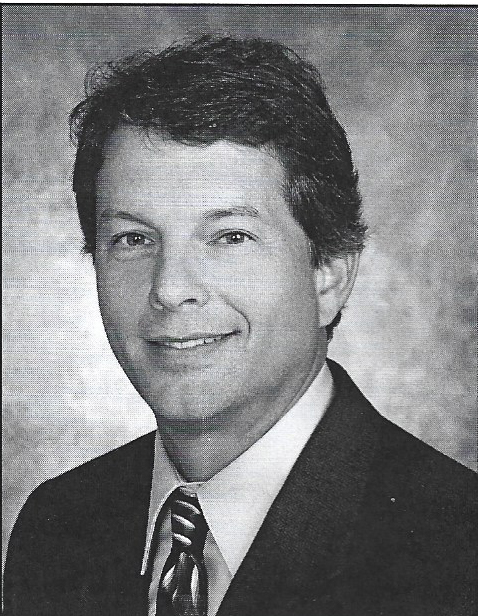
-
Dr. Kenneth Diminick is another of the famous sons of the legendary Mt. Carmel coach, Joe “Jazz” Diminick. Playing for his father at Mt. Carmel Area, Ken led the Red Tornadoes to a perfect 24-0 record in 1972 and 1973, his junior and senior seasons. Mt. Carmel defeated Valley View and Dunmore for the Eastern Conference Championship at the end of each season. Ken was a team Co-captain in 1973. In his three-year starting career at Mr. Carmel, Ken scored 29 touchdowns. In 1973, he led the Tornadoes with 925 rushing yards. His career total was 1,454. He caught a total of 29 passes for a three-year total of 647 yards. Ken was also outstanding as a punt and kickoff returner, electrifying the Red Tornado crowds and standing second in Mt. Carmel annals to his brother Gary – with a career total of 947 yards. Ken was equally adept as a defensive back. He received All-State mention in both 1972 and 1973. In his Mr. Carmel career, Ken averaged 10.4 yards each time he touched the ball and totaled 3,048 all-purpose yards. After the 1973 season, he was given both the coveted Mike Terry and Len Eshmont Awards. Ken was named to the 1974 Pennsylvania Big 33 team which defeated Ohio 14-7.
After his graduation, Ken entered Villanova University and played on the 1974, 1975 and 1976 Wildcat football teams. He was a three-year letterman and a starter at running back and kick returner. As a senior, he was Villanova’s leading rusher with a 5.2-yard average. Ken scored the winning touchdown for the Wildcats against his Dad’s Alma Mater, Boston College – the week after BC upset No. 1 Texas. He graduated from Villanova holding the Wildcat single season and career kickoff return records.
Joe Glenn
Deceased
Year Inducted:2007

-
Joe Glenn was a professional baseball player for 23 seasons. His major league career spanned nine years - 1932 to 1940 – and included some of the New York Yankees’ most glorious seasons. He joined the Yankees on August 24, 1932 at the age of 23. He made the Yankees 1932 World Series roster and caught for the New York Yankees in 1932, 1933, and 1935 through 1938. He was with the St. Louis Browns in 1939 and the Boston Red Sox in 1940. For the Yankees, he was the back-up to the great Bill Dickey. Joe was the Yankees’ catcher for the last game pitched by Babe Ruth in 1933. On August 24, 1940, he caught the only game the immortal Ted Williams pitched for the Boston Red Sox. Williams pitched in relief that day.
The Yankees nicknamed Joe “Gabber.” He kept his big-league teammates on their toes through his entire career with his constant bench chatter. Joe played in 248 games and had a lifetime batting average of .252. He hit five home runs and drove in 89 runs. His most productive season was probably 1939 with the Browns when he hit .273 and drove in 29 runs. Joe batted and threw right-handed. He was 5-11 and weighed 175 pounds.
General George A. Joulwan
Living
Year Inducted:2007
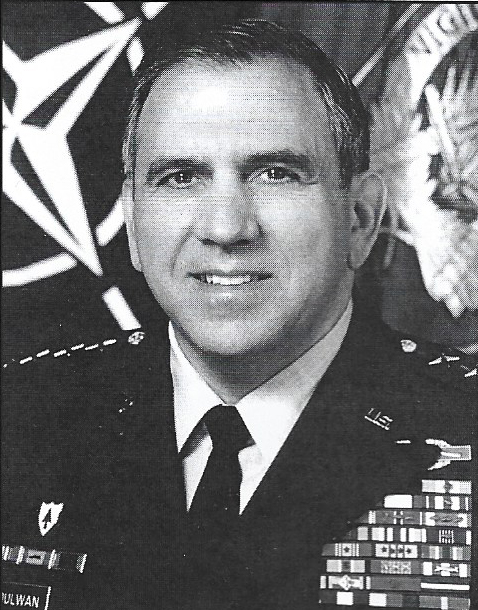
-
Retired U.S. Army Four-Star General George Joulwan has had an outstanding athletic and military career. His 36 years of service included four as the NATO Supreme Allied Commander, serving in this critical world stage position from 1993 to 1997. He established the first-ever strategic policy in U.S. engagement in Africa and orchestrated programs that greatly enhanced and stabilized the total military situation involving Easter Europe and Russia. He was the first Supreme Commander to have commanded at every level from platoon through corps.
General Joulwan was born in Pottsville on November 16, 1939. Raised in the Schuylkill County seat, he became a standout for the strong Pottsville Crimson Tide football team. He was a first-team All-State selection in 1956, playing center on offense and linebacker on defense. He was also named to the first Pennsylvania Big 33 team. Also a basketball star, he received All-State mention in 1957. Appointed to the U.S. Military Academy at West Point, George became a star for Army as well. Again, playing center and linebacker, he was honored with West Point’s Thomas Hammond award as his team’s Outstanding Lineman, as well as being All-America honorable mention. He played in the North-South Shrine All-Star game after his senior season.
Leo "Bugsy" Koceski
Living
Year Inducted:2007

-
Leo R. Koceski, a native of Canonsburg, was an outstanding running back at the University of Michigan, after two All-WPIAL football seasons at Canonsburg High School in 1945 and 1946, also known as the "Canonsburg Comet."
Koceski scored 19 touchdowns in 1946, his senior season at Canonsburg and was a sprinter and long jumper in track. He selected Michigan from approximately 40 college offers and was a varsity halfback in his sophomore year when the Wolverines won the national championship in 1948 under famed head coach Fritz Crisler.
In Koceski’s junior and senior seasons, Michigan was co-champion with Ohio State in 1949 and Big 10 and Rose Bowl champion in 1950, when the Wolverines defeated Ohio State 9-3 in a heavy snowstorm in Columbus to clinch the title. Michigan then beat California 14-6 in the 1951 Rose Bowl.
Koceski, who did not play high school baseball because Canonsburg did not have a team, played the outfield on two Big 10 championship teams at Michigan and was elected captain in 1951. He received the university’s Big 10 award as an outstanding athlete and scholar.
He resides in Dearborn Heights, MI. and was employed as a sales representative for Wilsonart Co. He is married and has three sons.
Phil Marion
Living
Year Inducted:2007
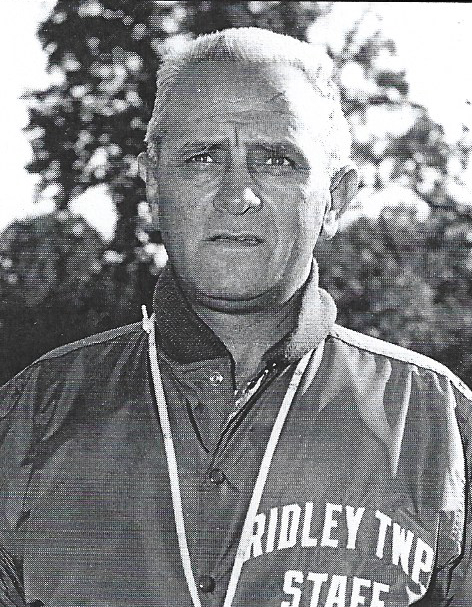
-
Fordham University’s “Seven Blocks of Granite” of 1936 are part of the lore of college football. In those times, the Rams, coached by “Sleepy” Jim Crowley of “Four Horsemen” fame, were a national power. Phil Marion of Eddystone, Delaware County, was a star guard on those teams, playing opposite another legend, Vince Lombardi. Frank Leahy was a Fordham assistant. Phil was 5-8 and 185, stocky and tough. The Fordham forward wall was nearly impregnable.
Following his college career, Phil Maron entered coaching. He had been an All-Scholastic fullback at tiny Eddystone High School, competing against opponents with much larger enrollments. After stints as an assistant, he became the Head Coach at Ridley Township in 1943, holding that position for 30 years, until ill health forced his retirement after the 1972 season. His Green Raider teams won eleven league titles and were undefeated in seven seasons. Phil’s overall record at Ridley was 222 wins, only 58 defeats, and 16 ties. His best team may have been the 1958 squad which won all ten games and was rated one of the top elevens in Pennsylvania. Ridley won 23 straight games, beginning in 1963 and extending into the 1966 season.
Phil Martelli
Living
Year Inducted:2007
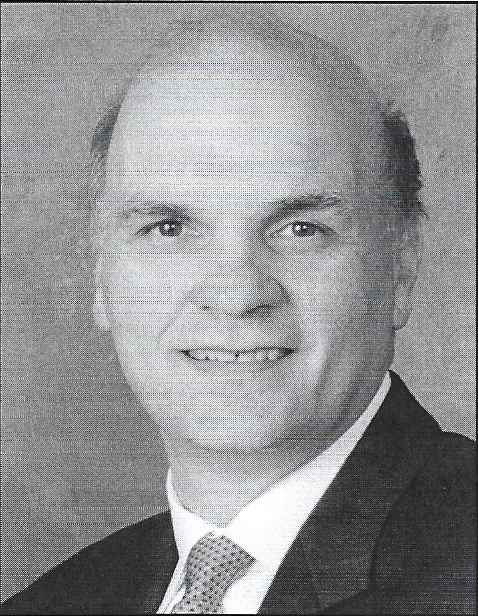
-
Phil Martelli created a basketball legend in Philadelphia. His 2004 St. Joseph Hawks were 27-0 in the regular season and reached Number One ranking in both major polls for the first time in school history. The Hawks were then accorded a Number One seed in the NCAA tournament and advanced to the Elite Eight where they suffered a narrow loss to Oklahoma State. His outstanding guard, Jameer Nelson from nearby Chester, was named unanimous first team All-American and National Player of the Year. Phil himself was the consensus National Coach of the Year. He also won his fourth Atlantic Ten coaching award. The former Widener University basketball captain led the Hawks to ten conference regular season titles, four NCAA tournaments, and four appearances in the NIT. Phil’s overall record in twelve seasons at St. Joseph’s was 240-139.
Graduating from Widener in 1976, Phil assisted at Widener and spent seven years as head coach at Bishop Kenrick High School. He became an Assistant at St. Joseph’s University in the Fall of 1985. In his decade as an assistant, the Hawks made the NCAA tournament in 1986 and the NIT in 1993 and 1995. On July 20, 1995, he was named the 14th Hawk Head Coach. In his first season, the Hawks reached the NIT championship game.
John Pergine
Living
Year Inducted:2007

-
John Pergine’s recognition as an outstanding athlete began at Plymouth-Whitemarsh High School in suburban Philadelphia. He was a three-sport star for the P-W Colonials. As a junior in 1963, he starred on the PIAA State Class A basketball championship team that defeated Norwin for the title. He was a key starter on the 1964 P-W team that reached the State title game, losing to Uniontown. John was a first team All-Starter both years. On the gridiron, John was a star quarterback and line backer and was named to the third All-State team as quarterback. His P-W teams won three straight Suburban One titles. He played in the great 1964 Big 33 Pennsylvania victory over the Texas All-Stars. At Notre Dame, he saw action as a sophomore linebacker in 1965, then became a starter on the 1966 Fighting Irish National Champions. He was the second leading tackler, including seven for a loss. He received All-American recognition.
John then played for seven seasons at linebacker in the National Football League, starring for both the Los Angeles Rams and the Washington Redskins. In 1975, his touchdown catch on a fake field goal put the Redskins into the NFL playoff. This was Joe Theismann’s first NFL TD pass.
Jim Phelan
Deceased
Year Inducted:2007

-
A fifty-year coach, Jim Phelan is revered at Mount St. Mary’s University in tiny Emmitsburg, Maryland. Head coach for 49 years, Jim won 830 games and lost only 508, directing his team in more than 1,330 games. When he retired after the 2002-2003 season, Jim ranked third in all-time victories by a Division I coach. He led the Mount to a Division II National Championship in 1962. He made 16 trips to the NCAA Division II tournament, including five Final Four appearances. Jim directed nineteen 20-win seasons and had only ten losing campaigns. His best season was 28-3. His team received invitations to the NCAA “Big Dance” in 1995 and 1999, and an NIT bid in 1997. Jim also served Mount St. Mary’s for 22 years as Athletic Director, along with his basketball duties. He helped lay the groundwork for the school’s move to Division I in 1988. Once this was done, Jim returned to full-time service with his basketball squad. His graduation rate for his players exceeded ninety percent. Jim’s personal honors included NCAA Coach on the Year in 1962 and NCAA Division II Coach of the Year in 1981.
Myron Moe Pottios
Living
Year Inducted:2007

-
Myron, a native of Van Voorhis, lettered in football, basketball, track, and baseball at Charleroi High School. He graduated in 1957. As a two-way performer in football as fullback and linebacker, he earned All-State and All-American honors. In his senior season, he led the Cougars, coached by James “Rab” Currie, to the WPIAL Class AA championship against Jeannette. Charleroi lost a heartbreaking 16-13 score on a field goal by Jim Burzio with four seconds remaining in the game.
He played college football at the University of Notre Dame, performing as a linebacker, center and guard from 1958-1960 under the guidance of head coaches Terry Brennan and Joe Kuharich. Earning a reputation as a bruising tackler, Myron captained the Fighting Irish in 1960 and was named to several college All-American teams. He earned a Bachelor of Arts degree in business management at Notre Dame and graduated in 1961.
Myron began a long and successful 13-year career in the National Football League beginning with the Pittsburgh Steelers in 1961. He played for the Steelers through 1965 and ensuingly was a standout for the Los Angeles Rams from 1966-70 and the Washington Redskins from 1971-73. The 6'2", 225-pound linebacker was known for his fierce tackling. He won All-Pro honors and was selected to play in the Pro Bowl three times. He also played in Super Bowl VII with the Redskins. He built a reputation as one of pro footballs better middle linebackers. Pottios suffered two broken arms and a dislocated shoulder during his five years with the Steelers. Owner Dan Rooney of the Steelers saw Pottios as beginning the great linebacker tradition and he was succeeded by Jack Ham and Jack Lambert.
Following his playing career, Myron coached the Philadelphia Bell in the World Football League.
He is involved in numerous community activities, including Caring for Kids, Little League Football, benefit golf tournaments, the Taste of the NFL charity event to provide food for the needy, and numerous other fundraisers. Myron is a member of the Pennsylvania Sports Hall of Fame along with the Charleroi Hall of Fame.
Living in Lake Forest, California, Myron was the owner of a metal distributing business which he has since sold. He and his wife Doreen are the parents of two children.
Lou Sorrentino
Deceased
Year Inducted:2007
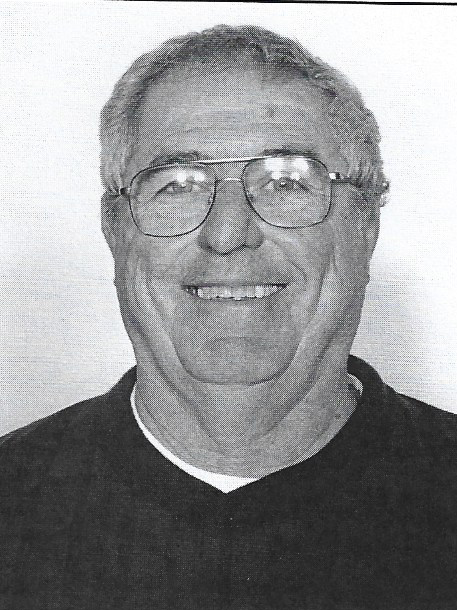
-
Lou Sorrentino was a three-sport athlete at both Sharon Hill High School and Lebanon Valley. He starred in football, basketball, and baseball. At Sharon Hill he was All-Delaware County in all three sports. Receiving a scholarship to Lebanon Valley, he went on to win twelve inter-collegiate varsity letters. On the gridiron, he won second team Little All-American honors and was selected to play in the Blue-Gray game where he was MVP for the Blue Team.
In basketball, Lou was part of one of the most amazing stories in NCAA Basketball Tournament history. He and his Lebanon Valley Dutchmen Teammates startled the hoops world in 1953 when the squad from the tiny school in Annville reached the Sweet Sixteen after a stunning win over Fordham at Philadelphia’s Palestra. Lou scored 30 points on the Surprised Rams. Louisiana State with Bob Pettit finally eliminated the game Dutchmen who had no starter over six foot one.
He was drafted into the army graduation and could not follow up his Signing with the Baltimore Orioles. Playing at Fort Meade, Maryland, Lou was the All-Eastern Service quarterback in 1955.
Robert M. Bessoir
Deceased
Year Inducted:2006
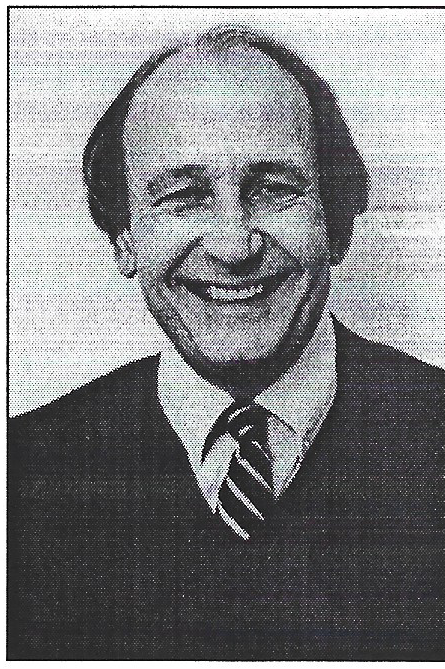
-
Robert coached basketball at the University of Scranton for 29 years with a .678 winning percentage and toq NCAA Division III National titles (1976 and 1983). He coached 4 NCAA Final Four Teams (2 first place, 1 second and1 third), had the most Division III tournament appearances (18), 15 MAC titles, 24 winning seasons, 13 twenty wins or more seasons, 4 MAC Coach of the Year awards, 3 ECAC each of the Year awards (1976.1977.1983 and was the Kodak Division III, Coach of the Year in 1983. 7th on the NCAA (Division III) list with 554 wins.
He graduated form the University of Scranton where he lettered for 4 years His rebounding record still stands (43 in 1955) against Kings, still 7th best in the NCAA Record Book. He led the Royals in scoring and rebounding his senior year (1955) and received an MVP award (1954).
Joseph G. Cesari, Jr
Living
Year Inducted:2006

-
Joseph attended North Schuylkill High School 1980 – 1984, where his career wrestling record was 154-5-1. He won three PIAA State Wrestling titles and was voted “Most Outstanding Wrestler” in 1982 and 1983. In 1983 he pinned all opponents in district, regional and state tournaments. His 50 – 0 record in 1984 and 103 pins were state records. Joseph was selected a high school All-American three times. Joseph was World freestyle champion in 1979. He graduated from North Carolina State and captained the Wolfpack to 2 ACC titles.
Peter N. "Pete" Duranko
Deceased
Year Inducted:2006

-
Pete “Diesel” Duranko He was named a 1962 Johnstown Catholic 1st Team All – American and to the Bif 33 Game. Pete was also the PCIAA Shot Put (55’9”) and Discus (152’ 8”) Champion. Her attended Notre Dame University (1962-1966), and was named Defensive MVP during their National Championship season. He was voted PA College Lineman of the Year, He was drafted by the Cleveland Browns and Denver Broncos and played for the Denver Broncos (1967 – 1975) at defensive end and tackle.
Betsy King
Living
Year Inducted:2006
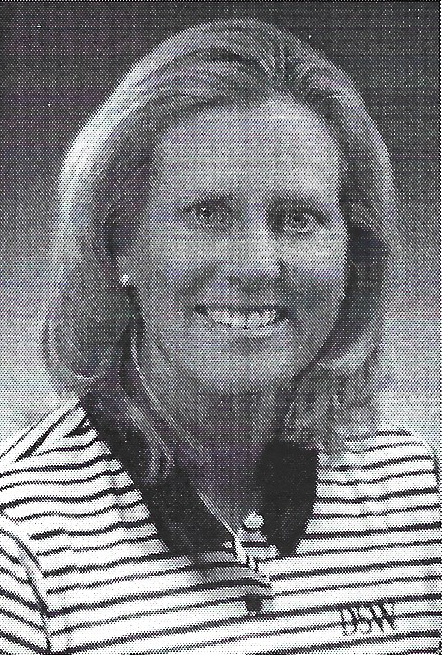
-
Betsy was inducted into the LPGA Hall of Fame after her 30th win at the ShopRite LPGA Classic I 1995. She has 34 career victories, including Six majors – Dinah Shore 1987,1990,1997), U.S. Womens Open (1989, 1990), and Mazda LPGA (1992). She was the first LPGA player to pass the $5 and $6 million mark in season earnings (1995 and 1998). She was LPGA Player of the Year in 1984, 1989 and 1993) and the Vare.
Betsy played on the Furman University’s NCAA title team in 1976 and Voted their athlete and Women Scholar Athlete of the Year in 1977. She has been inducted into the Furman University and Exeter High School Halls of fame.
Roger Kingdom
Living
Year Inducted:2006
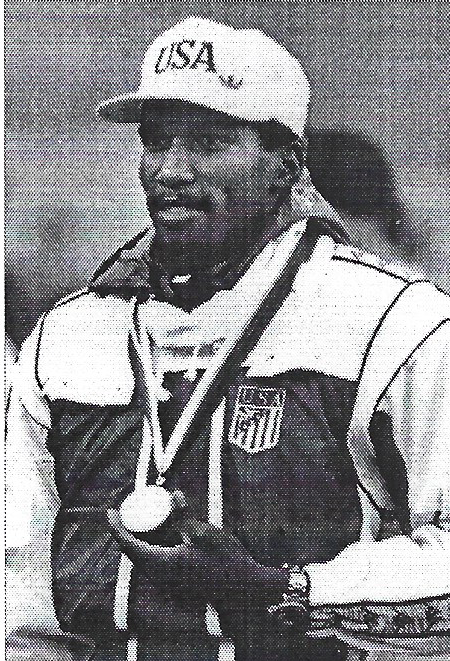
-
Roger is originally for Vienna, GA. He attended the University of Pittsburgh on a football scholarship where he played with the likes of Dan Marion, Chris Doleman and Jimbo Coleman. Roger is a two-time Olympic champion in the 110 high hurdles. In addition to winning a gold medal in the 1984 and 1988 Olympics, he is a five- time U.S. outdoor champion. He won a gold medal at the 1989 World Cup, 1989 World University Games and the 1989 and 1995 Pan Am Games. He set the World Record of 12.92 in the 110 High Hurdles in Zurich, Switzerland in 1989. In the years 2002-2003 Roger worked with the Cleveland Browns of the National Football League as an intern speed, strength, and conditioning Coach before signing with California University of PA.
He became the head coach of California University’s cross country and track and field programs. He was inducted into the National Track and Field Hall of Fame in 2005.
Return to Inductee at a Glance main page.